Welding is a dangerous profession that exposes workers to a number of hazards, including hot metal, sparks, and electrical shocks. Having proper foot protection is essential for welders to stay safe on the job. Welding boots provide crucial protection for the feet and ankles from these common welding risks.
When selecting welding boots, welders must consider a variety of factors to find the right pair for their specific needs and work environment. The most important elements of good welding boots include materials, safety features, comfort, and durability. Leather and specialized synthetic materials offer heat, abrasion, and cut resistance. Safety features like steel toes, electrical hazard protection, and metatarsal guards shield the feet from impact and compression. For comfort, features like cushioned insoles, flexible uppers, and proper sizing ensure all-day wearability. Finally, sturdy construction and high-quality materials allow welding boots to withstand the rigors of heavy use in demanding conditions.
With so many welding boot options on the market, it can be challenging to identify the ideal pair. To choose wisely, welders should evaluate the following key considerations when making their selection:
| Boot | Features | Advantages & Disadvantages |
|---|---|---|
|
Timberland Pro True Grit Pull-On Boot |
Premium full-grain leather upperAnti-slip rubber outsolePadded collar
Steel safety toe |
Advantages: Slip-resistant, durable, comfortable Disadvantages: Runs large, minimal ankle support |
Irish Setter Marshall Steel Toe Boot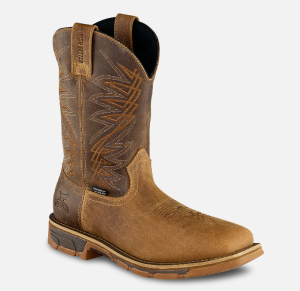 |
Heat-resistant soleLeather and nylon upperMoisture-wicking lining
Steel safety toe |
Advantages: Lightweight, breathable, good traction Disadvantages: Less durable leather |
Georgia Boots Carbo-Tec Elite Western Boot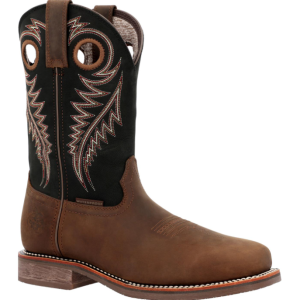 |
Full-grain leather and Cordura upperCarbon fiber safety toeAnti-slip TPU outsole
Removable high-performance insole |
Advantages: Extremely durable, composite toe lighter than steel Disadvantages: Expensive, runs large, break-in period |
Thorogood American Heritage Wellington Boot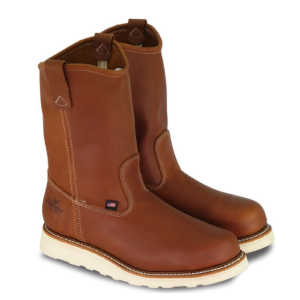 |
Oil-tanned leather upperSlip-resistant Vibram outsoleRemovable dual-density footbed
Fiberglass shank |
Advantages: Waterproof, good arch support, shock absorption Disadvantages: Heavy, limited sizes |
Irish Setter Two Harbor Pull On Boots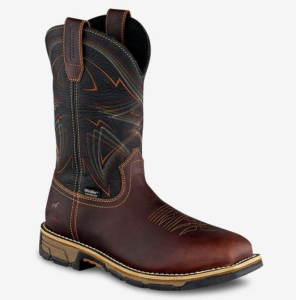 |
Full-grain waterproof leatherMoisture-wicking liningSlip-resistant TPU outsole
Steel safety toe |
Advantages: 100% waterproof, lightweight, pull-on style Disadvantages: Runs large, minimal ankle support |
Red Wing Safety Toe Metguard Boot |
Oil-tanned leather upperElectrical hazard protectionAnti-slip nitrile cork outsole
Metatarsal guard |
Advantages: Extreme impact protection, slip resistance Disadvantages: Expensive, heavy, break-in period |
Thorogood American Heritage Round Toe Boots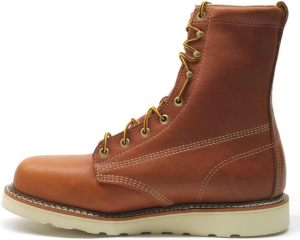 |
Tobacco oil-tanned leatherFiberglass shankSlip-resistant Vibram outsole
Removable shock-absorbing footbed |
Advantages: Durable leather, good ankle support, shock absorption Disadvantages: Runs large, limited sizes |
Timberland Pro Boondock Safety Toe Boots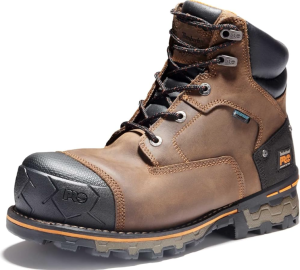 |
Waterproof leather upperAnti-fatigue technologySlip and oil resistant outsole
Composite safety toe |
Advantages: 100% waterproof, lightweight, composite toe Disadvantages: Less durable, runs large |
When evaluating the features and tradeoffs of different models, key factors to prioritize include safety, comfort, support, traction, and durability. Safety should be the number one criteria, with options like steel toes and electrical hazard protection. All-day comfort features like cushioning and flexibility also matter for extended wear. Supportive insoles, shanks, and ankle coverage provide stability for walking and standing. Slip-resistant soles with oil and heat resistance are vital for traction. Finally, full-grain leathers and rugged construction ensure boots withstand heavy use.
With knowledge of the critical elements that make up quality welding boots, welders can make the optimal choice for their unique needs. Focusing on safety, comfort, and durability will lead to a pair that protects their feet while allowing them to perform at their best.
Useful Tips for Choosing the Best Welding Boots
Investing in a high-quality pair of welding boots is one of the most important purchases a welder can make. However, with so many brands and styles available, it can be tricky to identify which option is right for you. Follow these useful tips to choose welding boots that offer the perfect fit, protection, and performance:
Prioritize safety features – Your boots must have safety toes (steel or composite), electrical hazard protection, heat resistance, and other guards like metatarsal shields. Don’t compromise on safety – it should be the number one factor.
Consider your work environment – What hazards do you face? Heat, sparks, moisture? Choose materials and features to match. Leather resists heat, while waterproof boots are crucial in wet conditions.
Get the right fit – Welding boots must fit snugly without pinching. Measure your feet late in the day when they are largest. Try on boots with the socks you’ll wear. Opt for adjustable laces and a roomy toe box.
Evaluate comfort and support – Cushioned insoles, flexible uppers, and shock absorbing elements keep your feet comfortable all day. Ankle support and arch reinforcement also prevent fatigue.
Confirm slip resistance – Check the outsoles are oil, chemical, and heat resistant. Deep lugs and rubber compounds prevent slipping on slick surfaces. Anti-fatigue technology helps too.
Ensure durability – Welding is tough on boots. Choose high-quality leather or synthetic uppers. Goodyear welt construction and strong stitching add longevity. Replace boots annually.
Break them in – Wear new boots at home to break them in before welding in them. Prevent blisters and discomfort.
Try before you buy – Shop at the end of the day when feet are largest. Try on boots and walk around the store. Ensure a comfortable, secure fit.
Taking the time to shop carefully for the right pair of welding boots is a worthwhile investment in your safety and performance. Evaluating your needs against the features and quality of different models will ensure you choose durable, protective footwear that keeps you safe and productive at work.
How to Care for Your Welding Boots Properly
Welding boots endure immense abuse on the jobsite. However, with proper care and maintenance, you can extend the life of your footwear significantly. Follow these essential tips for caring for your boots:
Clean regularly – Use a stiff brush and mild soap to remove dirt, debris, and spills promptly after welding. Avoid harsh chemicals that may damage the leather.
Condition frequently – Apply boot oil or conditioner every few weeks to replenish oils and keep leather supple. Massage into seams and joints.
Inspect for damage – Check for cracks, holes, separation, or excessive wear. Catching problems early allows for repair. Discard boots with irreparable damage.
Replace insoles – Comfort decreases as insoles compress. Replace insoles every 3-6 months or when footbeds feel too compacted.
Use boot trees – Place trees inside boots after use to absorb moisture and maintain shape. Allow boots to dry fully between shifts.
Store properly – Keep boots away from direct heat, sunlight, and chemicals when not worn. Store in a cool, dry place.
Re-lace periodically – Old laces stretch and break. Replace laces every few months to prevent tripping or slipping hazards.
Repair when needed – Take boots to a cobbler for resoling, stitch repairs, and other fixes to get more wear.
With work boots being the most important piece of PPE, taking proper care of your footwear should be a priority. Following these tips will maximize the life of your welding boots.
How to Break In New Welding Boots for Comfort
That first week wearing new welding boots can be brutal on your feet. Rigid leather leads to blisters and pain as you break them in. However, you can minimize discomfort using these pro tips:
Wear them at home – Walk around the house in new boots to gradually form them to your feet before welding.
Use a boot stretcher – Stretchers spread the leather to widen tight spots. Focus on the toe box and problem areas.
Try a shoehorn – A shoehorn eases your foot into the boot without crushing the heel, reducing rubbing.
Bandage hot spots – Cover blister-prone spots like heels and ankles with moleskin or athletic tape to prevent irritation.
Use sock liners – Liners worn under your socks allow feet to glide smoothly into the boots. Prevent friction.
Apply protectants – Conditioners and waxes make leather more pliable while waterproofing treatments stop moisture-caused abrasions.
Loosen laces – Lace loosely at first, gradually tightening as the boots widen. Prevent pinching and restricted blood flow.
Take painkillers – OTC meds like ibuprofen can temporarily reduce break-in discomfort.
Safety Standards All Welding Boots Should Meet
When selecting welding boots, it’s crucial to choose footwear that meets key safety standards. Don’t compromise on protection. Quality boots should comply with:
ASTM F2413 – This covers minimum requirements for impact and compression resistance. Boots must pass tests for the steel or composite toe cap.
ASTM F2892 – Boots with an EH or electrical hazard rating meet this standard for insulation against accidental electrocution from circuits of 18,000 volts or less.
ASTM F2412 – Footwear rated F2412 passes testing for resistance to electrical hazards under dry conditions. Required for welding boots.
ANSI Z41.1 – This American standard establishes requirements for construction, testing, and labeling of protective footwear like welding boots.
CSA Z195 – Canadian standard equivalent to ASTM F2413 for protective footwear, though with slightly different requirements.
In addition, quality boots offer heat resistance, slip resistance, and metatarsal protection. Leather uppers, Vibram soles, and Kevlar stitching also boost durability. Insist boots meet key safety criteria for your protection.
Top Brands Known for Quality Welding Boots
When it comes to welding foot protection, choosing a reputable brand you can trust is advised. These companies consistently produce high-performing, durable boots:
Red Wing – Famous for their rugged leather boots, Red Wing offers several steel and soft toe styles with Vibram outsoles ideal for welders. Quality craftsmanship and materials make them long-lasting.
Thorogood – Specializing in safety shoes for over 100 years, Thorogood builds welding boots tough enough to handle the most abusive conditions. Great traction and support.
Timberland Pro – Known for rugged work boots, Timberland constructs welding boots with premium leathers and safety features like composite toes and slip-resistant soles.
Georgia Boot – Georgia uses high-quality leathers and a comfortable Suspension System in their welding boots. Both soft and steel toe options are available.
Irish Setter – Their heat-resistant soles, durable USA-made leathers, and protective features make Irish Setter a go-to for welding footwear.
Carolina – Carolina boots offer steel toes, electrical hazard ratings, and durable construction. Their boots balance comfort, support, and protection.
When you choose reputable brands like these, you can be confident in getting well-made boots that keep your feet safe and comfortable all work day. Don’t risk off-brand boots that compromise on quality.
How to Wear Welding Boots Properly for Maximum Safety
Wearing welding boots improperly can lead to reduced protection and unnecessary foot injuries. Follow these guidelines to wear them correctly:
Lace up snugly – Boots must fit tight in the heel and ankle without restricting circulation. Prevent slippage and tripping hazards.
Wear tall socks – High socks protect ankles from irritation. Wool or cotton blend socks absorb moisture and insulate from heat.
Pull pants over boots – Prevent sparks and slag from entering boots. Avoid cuffs or tight pants that constrict circulation.
Tuck laces – Loosely tied, dangling laces can catch on equipment and objects. Tuck laces neatly into boots.
Check fit while standing – Feet expand when you stand. Ensure proper fit standing with weight on both feet before welding.
Reinforce loose areas – If boots are loose in certain spots, use laces, inserts or tongue pads to snug up fit and prevent rubbing.
Limit break-in time – Only weld in fully broken-in boots to prevent discomfort compromising your focus.
Replace when needed – Don’t delay replacing worn out or damaged boots. Compromised protection puts your feet at risk.
Why Proper Boot Care Improves Welder Safety
Welding subjects boots to immense abuse – heat, flames, molten metal, caustic chemicals, and impacts. Without proper care, boots quickly break down, compromising your protection. Maintaining your footwear properly improves safety in these key ways:
Preserves leather – Conditioning oils replenish dried leather, preventing cracking and breakdown that exposes feet to hazards.
Retains waterproofing – Treating materials ensures waterproof boots stay sealed, locking out contaminants that can burn or irritate skin.
Avoids blowouts – Inspecting for wear spots lets you repair holes before they expand and expose feet to falling debris and other dangers.
Prevents slipping – Cleaning debris from soles maintains traction and stability on slick, uneven surfaces common around weld sites.
Extends boot life – With care, quality boots can last years instead of months, saving you money on frequent replacements.
Improves comfort – Conditioned leather flexes easier, reducing break-in time to maximize working comfort and productivity.
Provides support – Keeping footbeds and ankles intact ensures boots continue providing critical fatigue-reducing support shift after shift.
Protecting Your Feet – A Welder’s Guide to Proper Foot Care
A welder’s feet endure immense strain and hazards daily. Without proper foot care, feet become damaged, increasing injury risks and decreasing effectiveness. Follow these pro tips to keep your feet in peak condition:
Clean and dry thoroughly – Use mild soap and water to clean feet daily, drying carefully between toes. Prevent bacteria and fungi from thriving.
Moisturize morning and night – Apply foot cream daily to keep skin supple and resistant to cracking, which can allow contaminants inside.
Wear clean socks – Change sweaty socks mid-shift to keep feet dry. Wear moisture-wicking socks made of wool or cotton blends.
Treat cuts immediately – Clean, disinfect and bandage any foot wounds promptly to avoid infection. Keep wounds covered with waterproof dressings while welding.
File calluses gently – Use a pumice stone or foot file to gently smooth corns and calluses, avoiding puncturing skin. Don’t cut calluses – padding prevents blisters.
Massage feet nightly – Increase circulation and reduce soreness by massaging feet before bed. Stretch and rub ankles and arches thoroughly.
Exercise lower legs – Simple exercises like ankle rotations, toe curls and calf raises improve mobility and strengthen feet for the strains of welding.
Replace insoles regularly – Don’t wait for footbeds to fully compress before swapping in fresh insoles to support arches and cushion impacts.
Get regular trims – See a podiatrist every 6-8 weeks to trim nails and treat any foot problems before they worsen and affect work.
Choosing the Right Socks for Welding Boots
The right socks act as a critical barrier between your feet and welding boots. They cushion your feet, wick moisture, and prevent blisters. Consider these tips when choosing socks for your boots:
Material – Look for socks made of wool, cotton, rayon or polyester blends. Natural fibers like wool wick moisture better while synthetics resist odors.
Cushioning – Medium or heavy cushioned socks protect your feet from impacts while also insulating from heat. Lightweight socks won’t provide enough shock absorption.
Fit – Sock fit should be snug without constricting circulation. Measure your foot size and match socks accordingly. Too large leads to wrinkles and friction.
Height – Choose high crew length socks that extend several inches above your boots. This protects ankles from rubbing and debris entry.
Padding – Extra padding in the heel, toe, and ball of foot acts as blister guards in high friction areas. Some socks also have arch support.
Moisture control – Look for moisture wicking and anti-microbial technologies to keep feet dryer and prevent odors. Change socks mid-shift as needed.
How to Resole Worn Out Welding Boots
The soles of welding boots take a beating and wear down quickly from heat, sparks, and heavy use. Resoling preserves the uppers while refreshing traction and shock absorption. Here’s how:
Inspect Uppers – Ensure uppers aren’t too deteriorated. Check for cracks or holes. Uppers must be intact for resoling.
Find a Cobbler – Ask colleagues for cobbler recommendations. Search for an experienced cobbler used to resoling heavy work boots. Avoid cheap gluing.
Remove Old Soles – Cobbler will fully remove worn treads and midsoles right down to the welt. This exposes the boot base for new components.
Add New Insoles – Replace compacted old insoles with new cushioned and supportive insoles. This restores comfort.
Attach New Soles – Cobbler cements and stitches on new thick heat-resistant soles for renewed traction and shock absorption.
Seal Edges – Edge dressing seals and protects the welt and stitches from dirt, debris and moisture. Locks out contaminants.
Break In – Wear resoled boots at home at first to fully break in new soles and prevent slipping on the job.
Signs It’s Time to Replace Your Welding Boots
Welding boots endure heavy abuse daily. Knowing when to replace them is key to protecting your feet. Watch for these signs it’s time for new boots:
Worn tread – Smooth, thin soles mean no traction on slippery surfaces and metal shavings.
Holes or cracks – Compromised uppers can’t protect from falling sparks, debris, and spatter. Toes visible through leather signal replacement time.
Separated soles – Soles separating from uppers indicate weak construction unable to protect feet adequately.
Poor support – Compressed, worn insoles don’t support arches properly, straining feet.
Reduced shock absorption – Thin, hard footbeds don’t cushion impacts from standing and walking. Feet feel every step.
Degraded insulation – Boots worn from electrical hazards or waterproofing fail to protect from shocks or moisture.
Uncomfortable fit – Loose, sloppy fit from stretched out uppers allows too much movement while welding.
Safety Precautions When Welding in Boots
Welding in boots poses risks if proper precautions aren’t taken. Be sure to:
Check boots before welding – Inspect for oil, grease or other flammables. Leather can ignite. Clean boots to remove any combustibles.
Ensure snug fit – Loose boots increase chances of sparks entering. Lace up boots tightly and tuck pants over them.
Know your laces – Some materials like polyester can melt and fuse to skin if sparked. Opt for leather or cotton laces.
Remove spatter promptly – Brush off hot spatter stuck to boots immediately before it burns through leather.
Check boot condition – Don’t weld in damaged boots with holes or separated soles. They can’t protect adequately from heat and spatter.
Use spats if needed – Leather spats over boot tops offer added protection from falling sparks and slag.
Dry boots fully – Never weld in damp boots which conduct electricity easier, raising risks of shocks.
Safety Precautions When Welding in Boots
Welding in boots poses risks if proper precautions aren’t taken. Be sure to:
Check boots before welding – Inspect for oil, grease or other flammables. Leather can ignite. Clean boots to remove any combustibles.
Ensure snug fit – Loose boots increase chances of sparks entering. Lace up boots tightly and tuck pants over them.
Know your laces – Some materials like polyester can melt and fuse to skin if sparked. Opt for leather or cotton laces.
Remove spatter promptly – Brush off hot spatter stuck to boots immediately before it burns through leather.
Check boot condition – Don’t weld in damaged boots with holes or separated soles. They can’t protect adequately from heat and spatter.
Use spats if needed – Leather spats over boot tops offer added protection from falling sparks and slag.
Dry boots fully – Never weld in damp boots which conduct electricity easier, raising risks of shocks.
When to Consider Steel vs. Composite Toe Boots
Choosing between steel and composite toes depends on your needs:
Steel – Best for heavy impacts. Withstands crushing forces up to 2500 lbs. Colder in winter. Extra weight can increase fatigue. Watch for rust.
Composite – Lighter but withstands up to 1700 lbs of impact. Warmer than steel since it is non-conductive. Less prone to rust or freezing.
Consider steel toes for demolition, construction, heavy industry where weight isn’t an issue. Composite toes suit those on ladders, working long shifts, in cold weather.
Evaluate your exposure to impact hazards and environment. Certain trades may require steel toes for the utmost protection. Assess your unique risks.
While a bit pricier, composite toes offer versatility for most welders. But those regularly facing heavy objects may prefer the ultimate impact protection of steel.
Should You Buy Used Welding Boots?
Used welding boots may seem tempting for the cost savings, but the risks outweigh the benefits:
Unknown abuse – No way to tell how they were broken in and used. Could be dangerously stretched out or worn down.
Compromised materials – Leather and soles may be too degraded to resist heat, impacts, and electricity.
Reduced support – Prior wear compacts insoles, losing cushioning and arch support vital for comfort.
Poor fit – Used boots conform to the prior owner’s feet. Achieving a safe, snug fit is unlikely.
Lack safety ratings – Certifications don’t transfer owners. Can’t confirm electrical or other protections still meet standards.
No warranty – No coverage for defects or premature breakdown since you aren’t the original owner.
Hygiene issues – Old boots may harbor bacteria and odors difficult to remedy.
Why Proper Boots Improve a Welder’s Performance
Quality protective boots don’t just guard welder’s feet – they can significantly improve performance:
Prevent fatigue – Supportive footbeds and shock absorption reduce leg and back strain from long periods on your feet.
Enhance comfort – A comfortable boot designed for welding keeps you focused, not distracted by pain.
Improve traction – Grippy soles prevent slips that can cause accidents or joint injuries.
Bolster confidence – Trusting your boots to protect you allows welders to fully concentrate on proper techniques.
Reduce injuries – Proper boots shield feet from impacts, heat, electricity and other on-the-job hazards.
Extend work life – Good boots withstand years of abuse, saving money on replacements that disrupt productivity.
Conclusion
Your boots are the foundation protecting your feet as a welder. Invest in quality boots with the right safety features, fit, and construction for your work environment.
While more expensive upfront, a proper pair will pay dividends over years of reliable protection and comfort on the job. Regular care also ensures your boots maintain their protective abilities over time.
Don’t cut corners with used, cheap, or inadequate boots that compromise your health and safety. Your boots are too vital for that. Do your research and make a wise investment in high-performance footwear you can trust shift after shift.
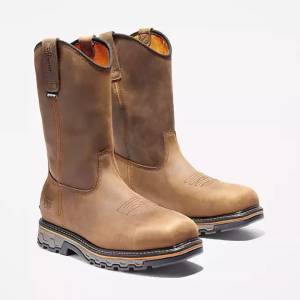
Leave a Reply